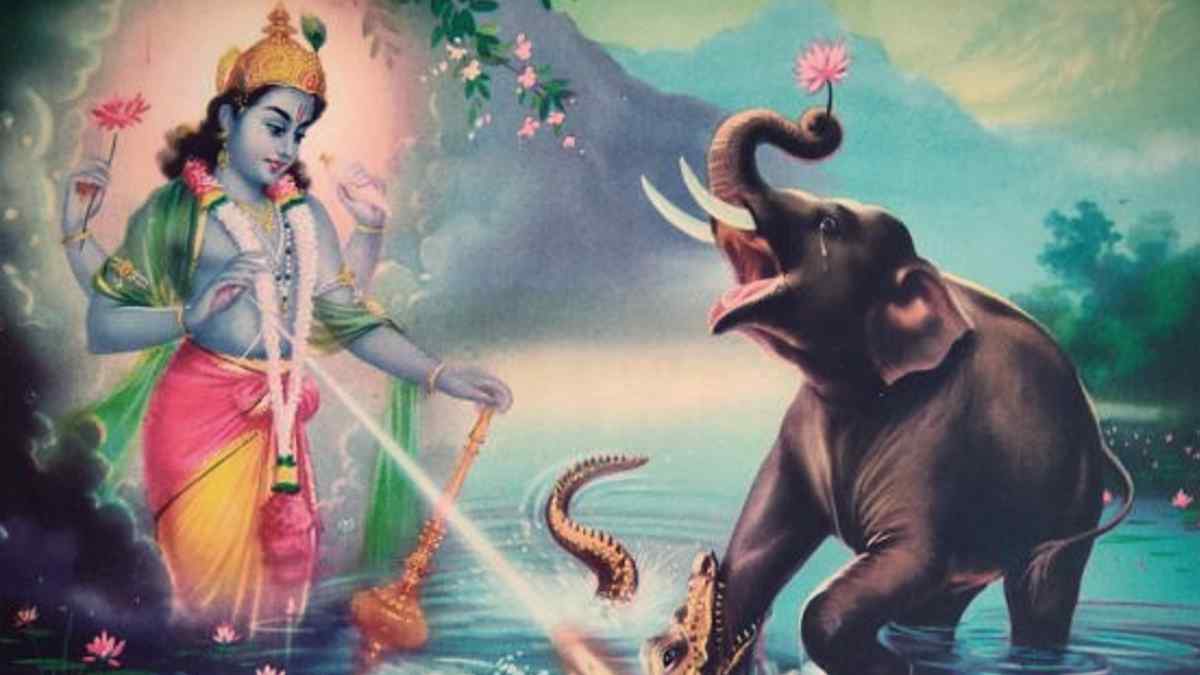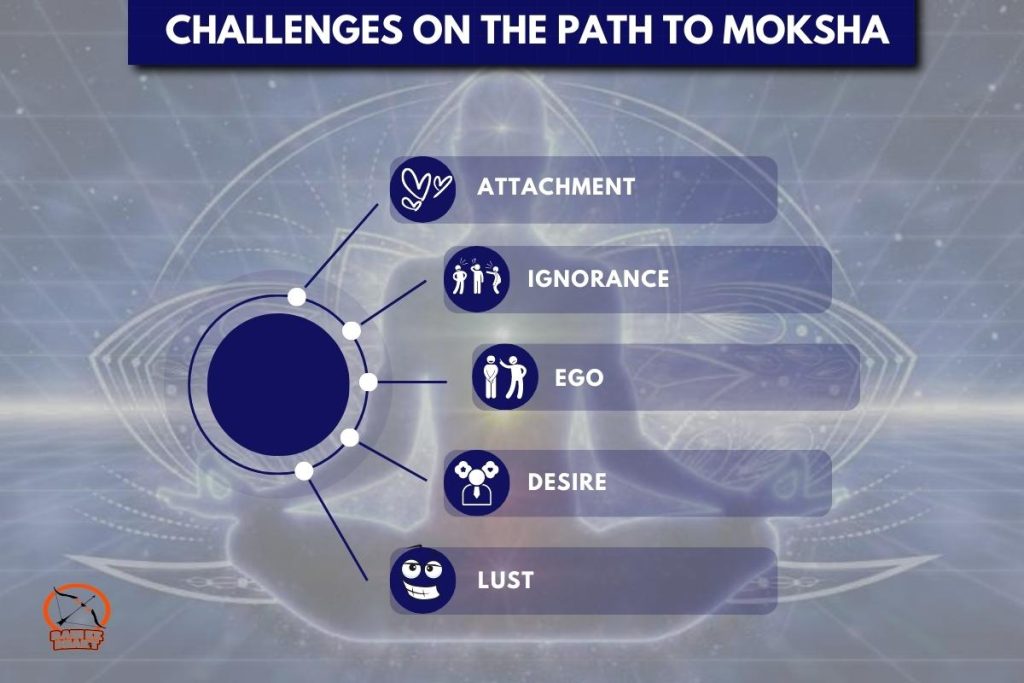
There is a profound and deeply beloved idea in Hinduism called “Moksha” or “Liberation.” It is the supreme spiritual objective that has drawn innumerable searchers’ attention for millennia. By breaking free from the cycle of birth and death, or moksha, the soul can unite with God and experience eternal happiness. We shall examine the nuances of Moksha in this blog, as well as its meaning, methods of obtaining it, and position within the rich body of Hindu thinking.
The Meaning of Moksha
Moksha represents the soul’s release from Samsara, the never-ending cycle of birth, death, and rebirth. Moksha’s fundamental components are the understanding of the Atman’s actual nature and the union of the Atman with Brahman, the supreme reality or cosmic consciousness. It symbolizes a condition of transcendence in which a person rises above the constraints of the material world to find eternal joy, serenity, and oneness with God.

The Significance of Moksha
Hinduism accords great importance to moksha for a number of reasons:
1. The End of Pain
Hinduism recognizes that pain exists in life and that it results from attachment, desire, and the never-ending cycle of birth and death. By overcoming materialistic wants and realizing one’s divine essence, moksha offers a method to break the cycle of suffering.
2. Spiritual Satisfaction
It is regarded as the pinnacle of the spiritual journey. The pinnacle of spiritual development, achieving Moksha is regarded as the finest accomplishment.
3. Spiritual oneness
The coming together of the individual soul (Atman) and the collective soul (Brahman) is known as moksha. It represents the fusion of the temporal with the eternal, the person with the cosmos, and the limited with the infinite.
Paths to Moksha
Hinduism offers a number of pathways (Yogas) for people to take in order to reach Moksha. These routes accommodate the various preferences and demands of seekers:
1. Karma Yoga
This route places a focus on doing good deeds and carrying out one’s obligations without attachment to the results. By doing this, people can clear their thoughts and eventually discover their divine essence.
2. Bhakti Yoga
The path of devotion known as Bhakti Yoga requires the follower to entirely give themselves over to a particular god or manifestation of the divine. One can achieve Moksha via love and devotion by developing a close, intimate relationship with God.
3. Jnana Yoga
The road to knowledge and wisdom is called Jnana Yoga. It entails in-depth reflection, self-examination, and the quest for spiritual wisdom. One can get Moksha by understanding the fundamental essence of existence and oneself.
4. Raja Yoga
Raja Yoga, commonly referred to as the royal path, comprises meditation as well as mind and sensation control. People can obtain self-realization and Moksha via the practices of meditation and concentration.
5. Hatha Yoga
Hatha yoga emphasizes the self’s physical and energy elements. It involves techniques to get the body and mind ready for spiritual development and Moksha, such as asanas (physical postures) and pranayama (breath control).
6. Mantra Yoga
In mantra yoga, sacred sounds or mantras are said repeatedly to clear the mind and raise consciousness. Mantras are said to have the ability to link a person to the divine.
The Role of Dharma
Dharma instructs people on how to live virtuous and moral lives, upholding their obligations to their families, communities, and self.
Fulfilling one’s worldly obligations (svadharma) with honesty and detachment is frequently the first step on the route to Moksha. By doing this, people may cleanse their thoughts, develop self-control, and progressively transcend the ego, which will better prepare them for the more difficult spiritual practices needed to achieve Moksha.

The Importance of Self-Realization
A major subject on the path to Moksha is self-realization, or being aware of one’s actual essence as divine. It entails grasping the deceptive nature of the material universe and the eternality and independence of the real self (Atman), which is independent of the physical body. The person can escape the cycle of Samsara and achieve Moksha via self-realization.
Challenges on the Path to Moksha
There are difficulties on the way to moksha. It calls for constant commitment, self-control, and the readiness to face one’s ego and attachments. The following are some typical challenges that searchers could run into:
1. Attachment
The soul might get trapped in the Samsara cycle by attachment to material belongings, interpersonal connections, and wants. A crucial step towards Moksha is to release these attachments.
2. Ignorance
People might remain mired in illusion because they are unaware of their genuine selves and the nature of reality. To remove ignorance, one must pursue spiritual understanding and knowledge.
3. Ego
On the way to Moksha, the ego, or the idea of a separate self, can put up obstacles. Transcending the ego and realizing the oneness of all creatures are both necessary for self-realization.
4. Desire
Strong appetites and desires can cause pain and keep the birth and death cycle going.
Conclusion
The liberation of the soul from the cycle of birth and death, which enables it to merge with the divine and achieve eternal joy, is symbolized by moksha, the highest spiritual aspiration in Hinduism. It is a deep idea that encapsulates the core ideas of Hinduism, including the ways to achieve it, the connection between Atman and Brahman, the significance of dharma, and the route to self-realization.
It takes self-control, commitment, and the courage to face the challenges posed by attachment, ignorance, ego, and desire in order to pursue Moksha. This is a journey that has served as an example to innumerable searchers throughout time and still serves as a beacon of hope for those seeking spiritual enlightenment.

